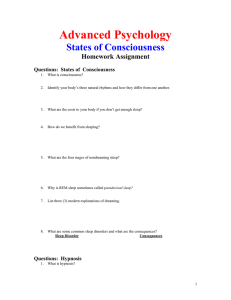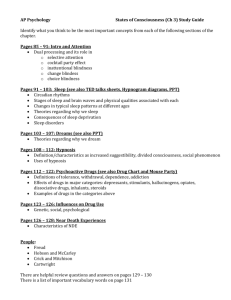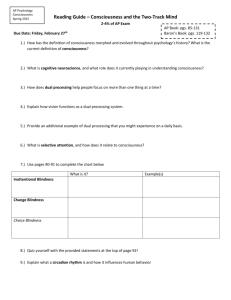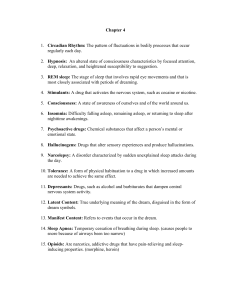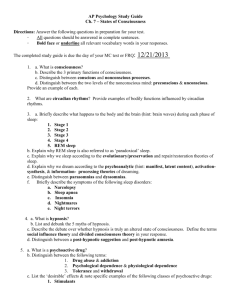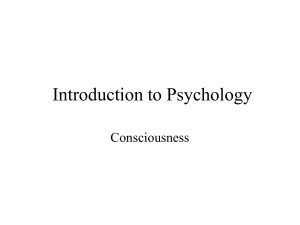Chapter 4 * States of Consciousness - Mr. Voigtschild
advertisement
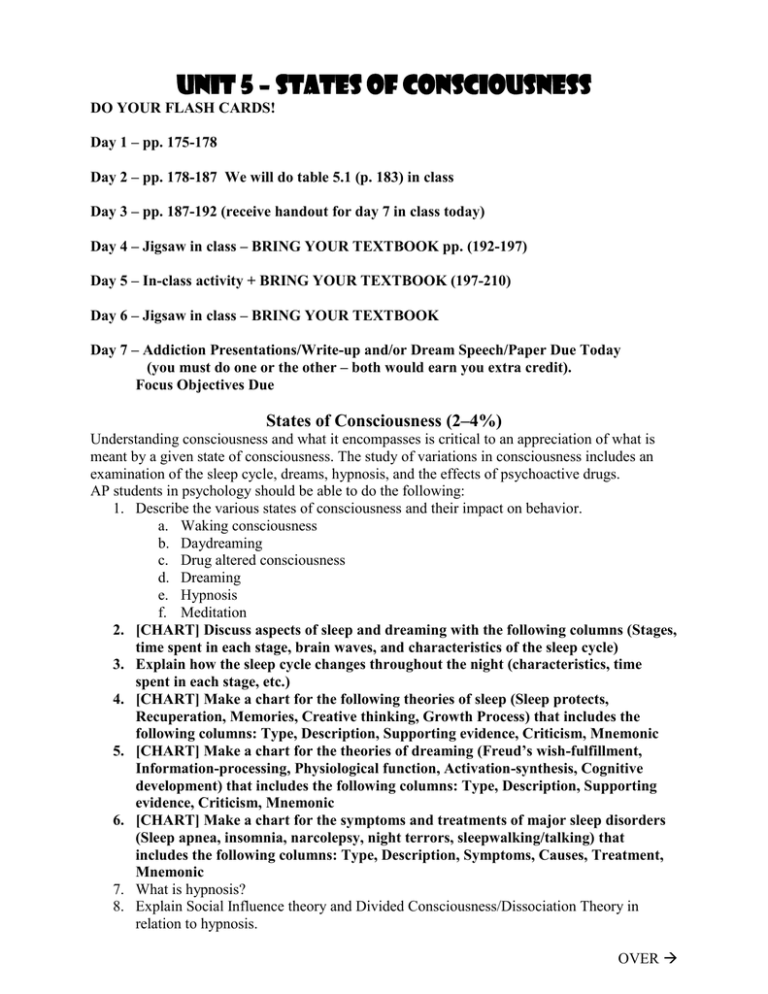
Unit 5 – States of Consciousness DO YOUR FLASH CARDS! Day 1 – pp. 175-178 Day 2 – pp. 178-187 We will do table 5.1 (p. 183) in class Day 3 – pp. 187-192 (receive handout for day 7 in class today) Day 4 – Jigsaw in class – BRING YOUR TEXTBOOK pp. (192-197) Day 5 – In-class activity + BRING YOUR TEXTBOOK (197-210) Day 6 – Jigsaw in class – BRING YOUR TEXTBOOK Day 7 – Addiction Presentations/Write-up and/or Dream Speech/Paper Due Today (you must do one or the other – both would earn you extra credit). Focus Objectives Due States of Consciousness (2–4%) Understanding consciousness and what it encompasses is critical to an appreciation of what is meant by a given state of consciousness. The study of variations in consciousness includes an examination of the sleep cycle, dreams, hypnosis, and the effects of psychoactive drugs. AP students in psychology should be able to do the following: 1. Describe the various states of consciousness and their impact on behavior. a. Waking consciousness b. Daydreaming c. Drug altered consciousness d. Dreaming e. Hypnosis f. Meditation 2. [CHART] Discuss aspects of sleep and dreaming with the following columns (Stages, time spent in each stage, brain waves, and characteristics of the sleep cycle) 3. Explain how the sleep cycle changes throughout the night (characteristics, time spent in each stage, etc.) 4. [CHART] Make a chart for the following theories of sleep (Sleep protects, Recuperation, Memories, Creative thinking, Growth Process) that includes the following columns: Type, Description, Supporting evidence, Criticism, Mnemonic 5. [CHART] Make a chart for the theories of dreaming (Freud’s wish-fulfillment, Information-processing, Physiological function, Activation-synthesis, Cognitive development) that includes the following columns: Type, Description, Supporting evidence, Criticism, Mnemonic 6. [CHART] Make a chart for the symptoms and treatments of major sleep disorders (Sleep apnea, insomnia, narcolepsy, night terrors, sleepwalking/talking) that includes the following columns: Type, Description, Symptoms, Causes, Treatment, Mnemonic 7. What is hypnosis? 8. Explain Social Influence theory and Divided Consciousness/Dissociation Theory in relation to hypnosis. OVER 9. Describe historic (mesmerism, neurhypnotism, Freud, Hilgard) and contemporary (pain control, placebo effect, psychosomatic disorders, psychotherapy) uses of hypnosis 10. [CHART] Make a chart for major psychoactive drug categories (depressants, Stimulants, Hallucinogens, Inhalants) that includes the following columns: Type, Description, Examples, Psychological Effects, Physiological Effects, Mnemonic 11. Explain the following using psychological concepts. a. drug dependence, b. addiction, c. tolerance, d. and withdrawal 12. [CHART] Make a chart to identify the major figures in consciousness research using the following columns (Who, What, When, Where and Why) a. William James, b. Sigmund Freud, c. Ernest Hilgard.


